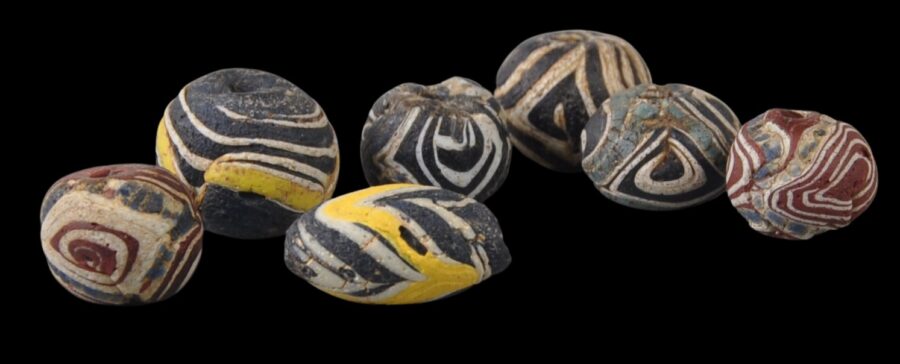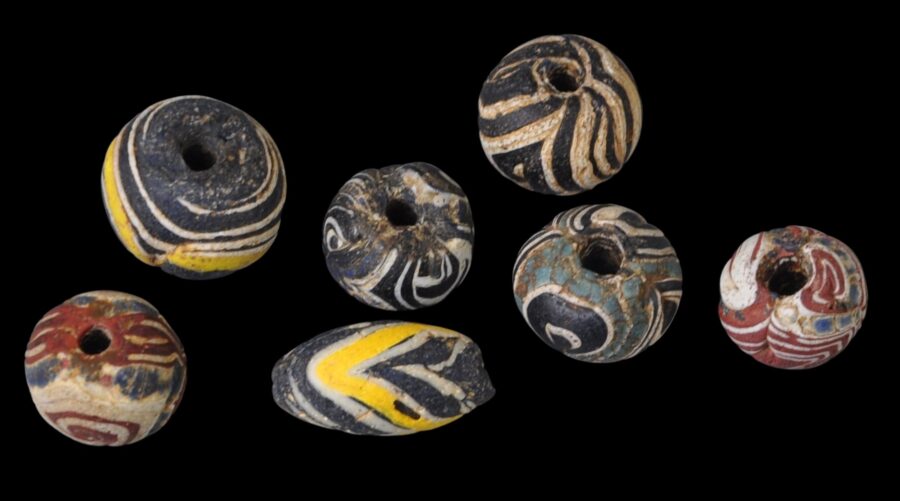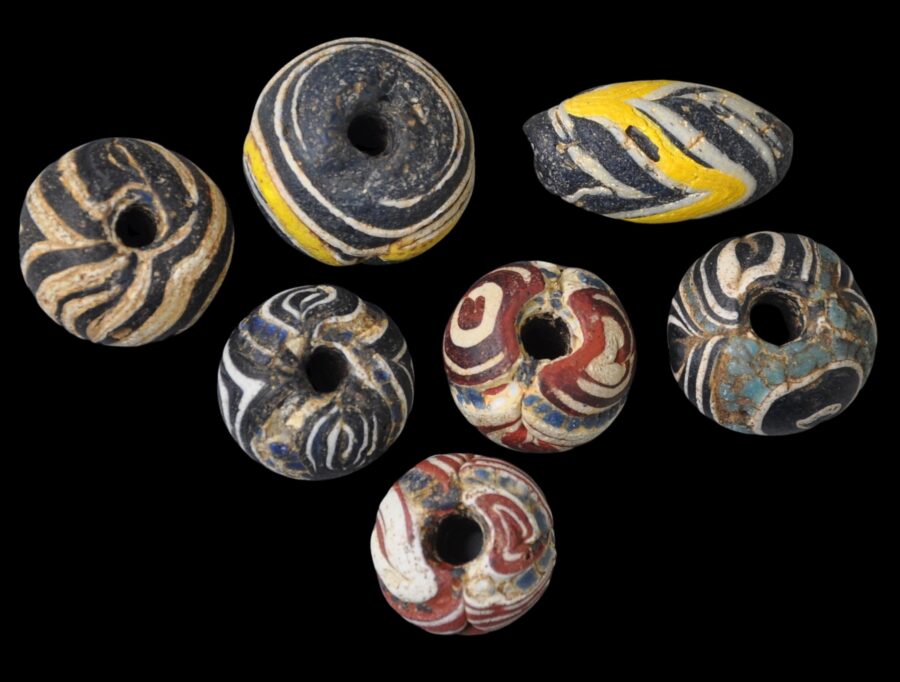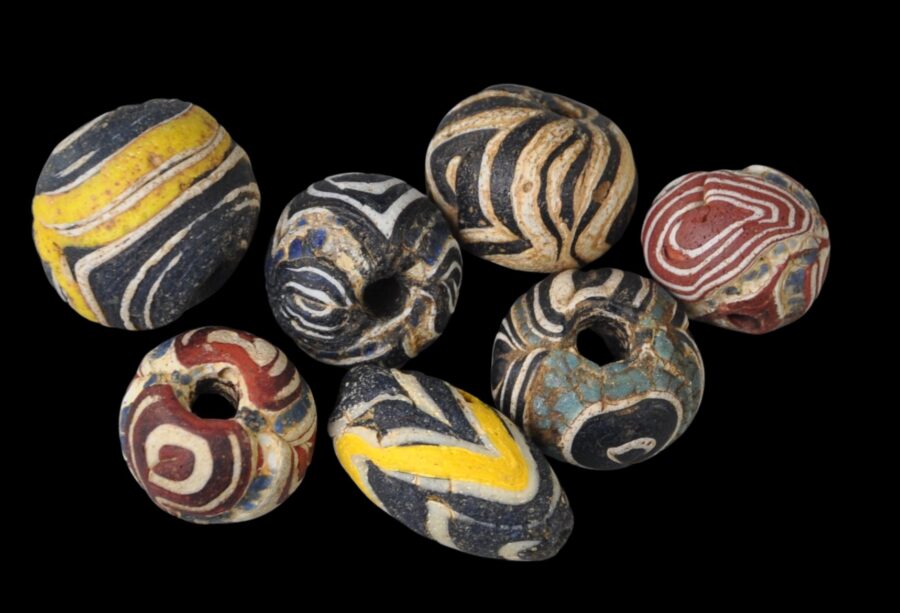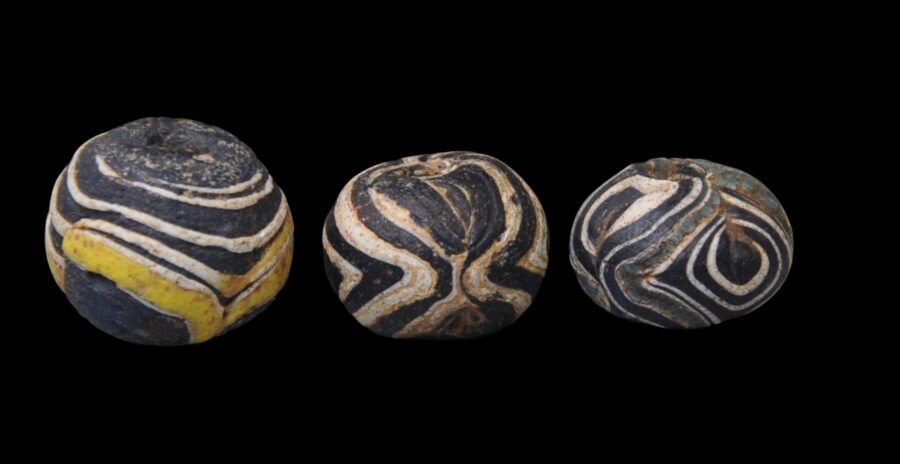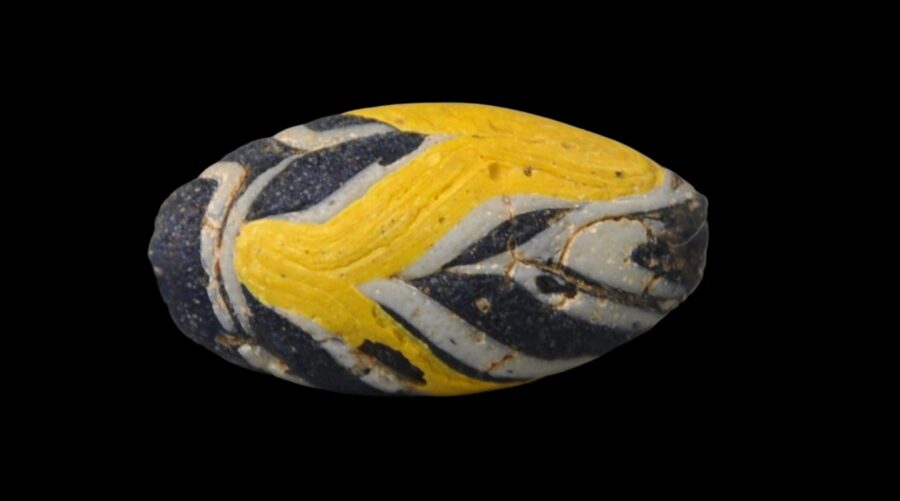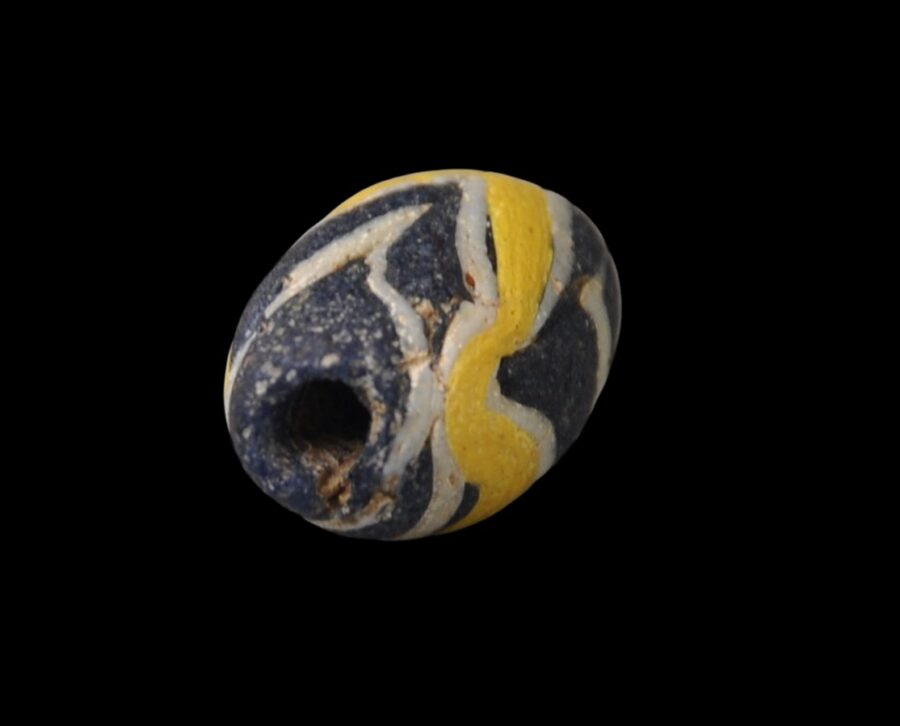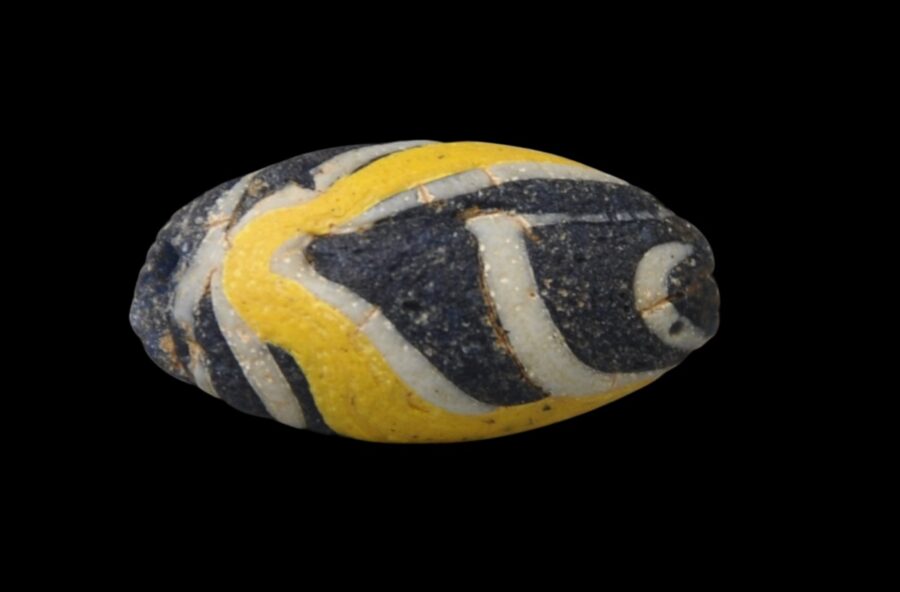Enquiry about object: 9830
Six Ancient Islamic Folded Glass Beads
Middle East (probably Egypt or Syria) for the African Market (probably Mali) 900-1200 AD
length: between 1.2 and 2.4cm, diameter: 1.2 and 2cm, combined weight: 36g
Provenance
private collection, Canada. The collection was carefully assembled over the last 50 years.
This superb collection of six ancient Islamic glass beads were produced in the Middle East – probably Syria or Egypt – and were then traded to West Africa. Five spherical beads are included as well as one very unusual oblong example. The beads are of red, black white and yellow folded glass.
Importantly, they are in excellent condition with little surface erosion.
They were made using the ‘folding’ technique whereby plaques or ribbons of glass was folded over a wire, with the edges being joined until a bead had been made. Different colours in the one bead arose from different coloured ribbons being folded over each other.
Islamic beads often were found in large quantities in archaeological sites near mosques, most probably because bead markets often were located near mosques. This suggests that such beads primarily were used for religious purposes, perhaps as prayer beads. Muslim prayer bead strands have either 33 or 99 beads upon which the 99 names of Allah can be recited. Beads used for this purpose generally are not distinguishable from other beads.
Beads also were worn to repel the Evil Eye. In many part of the northern Africa and the Middle East there was a widespread relief that certain people possessed an ability to bring misfortune on others who are caught by their glance. Accordingly, some would wear jewellery designed to repel the Evil Eye such as a model of the Hand of Fatimah, or a star or crescent. However, another way to avoid the Evil Eye would be to distract it by wearing attractive beads which would attract the eye.
The Islamic world encompasses parts of North Africa to the Middle East to South Asia to Southeast Asia and beyond. The Prophet Mohammed died in 632 AD and in less than one hundred years Muslim forces occupied regions from southern Spain to Pakistan. Much of this early progress encompasses the core of the Muslim world today. With Islamicisation came a cultural shift: Arabisation. People across northern Africa to Iraq began speaking Arabic and identifying as Arabs. But across the Broader Islamic work emerged a degree of cultural unity. A common script developed and common tastes which influenced what we now think of as ‘Islamic’ art. This is not to deny the marked diversity within the Islamic world but what did emerge was a trend towards commonality that simply had not been present before.
The six examples here are superb examples, and as mentioned, they show very little surface erosion.
References
Carboni, S., & Whitehouse, D., Glass of the Sultans, The Metropolitan Museum of Art, New York, 2001.
Francis, P., ‘Beads of the early Islamic period’ in Beads: Journal of the Society of Bead Researchers, Vol 1, 1989.


